英语:北师大版七年级下一般过去时语法课件
文档属性
| 名称 | 英语:北师大版七年级下一般过去时语法课件 | 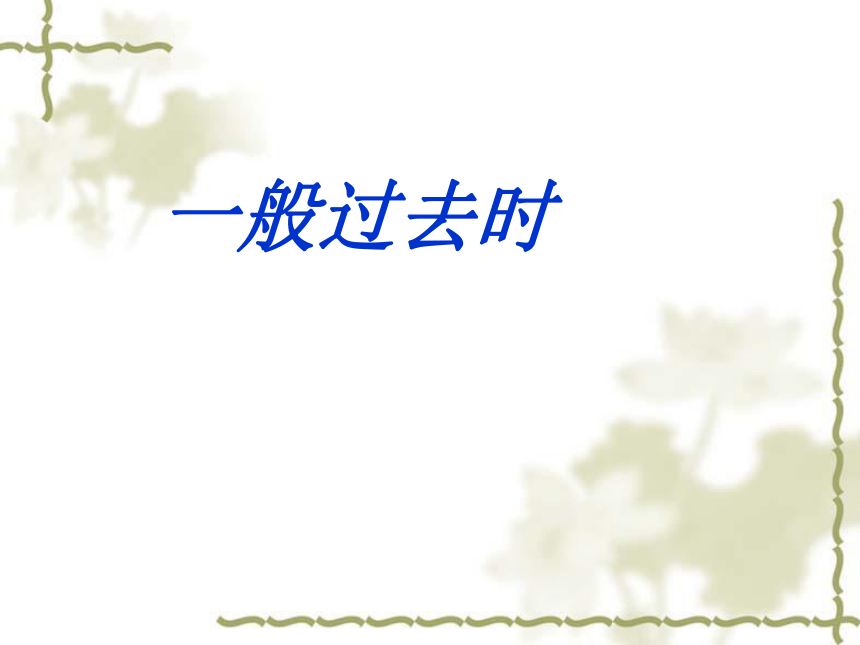 | |
| 格式 | rar | ||
| 文件大小 | 2.2MB | ||
| 资源类型 | 教案 | ||
| 版本资源 | 北师大版 | ||
| 科目 | 英语 | ||
| 更新时间 | 2009-08-20 21:53:00 | ||
图片预览

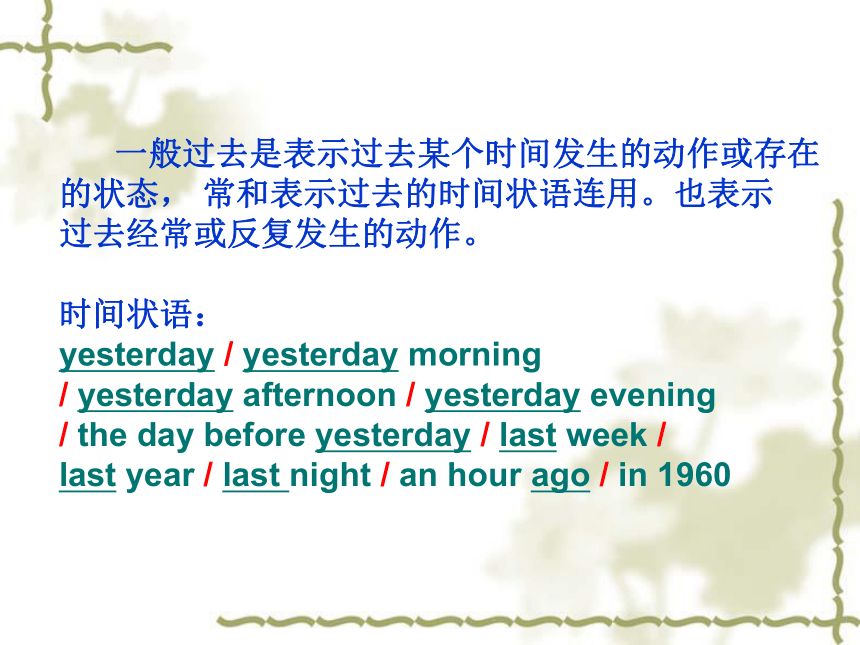
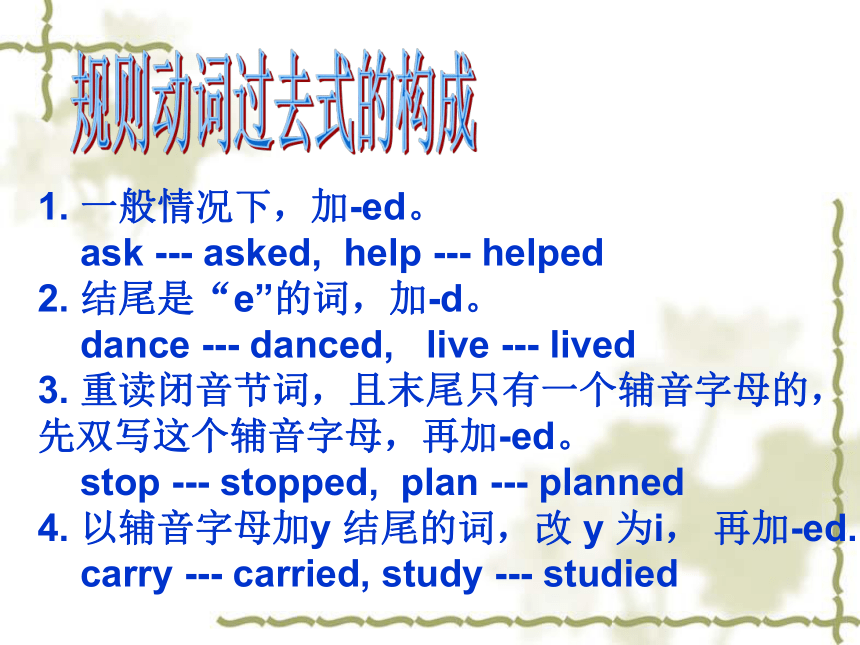
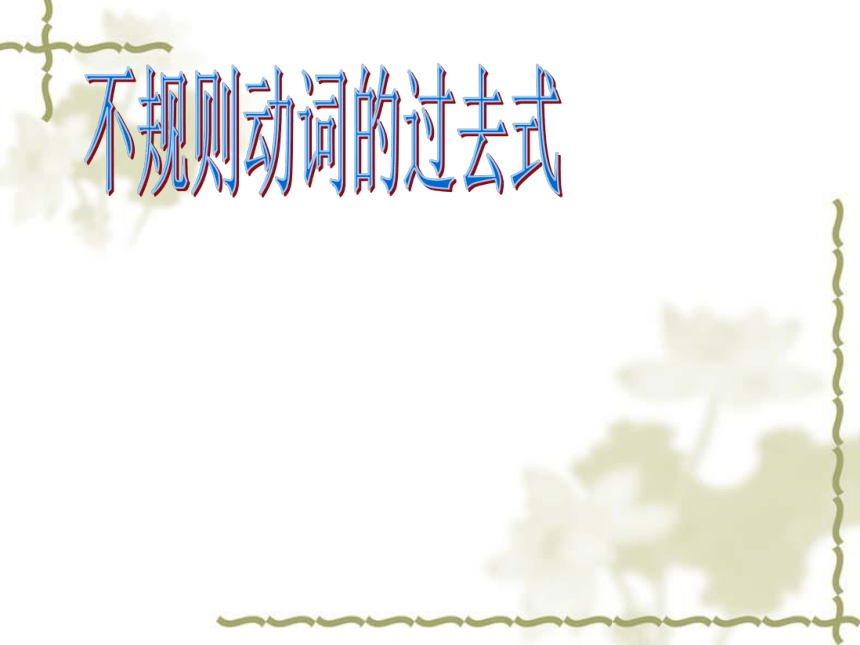
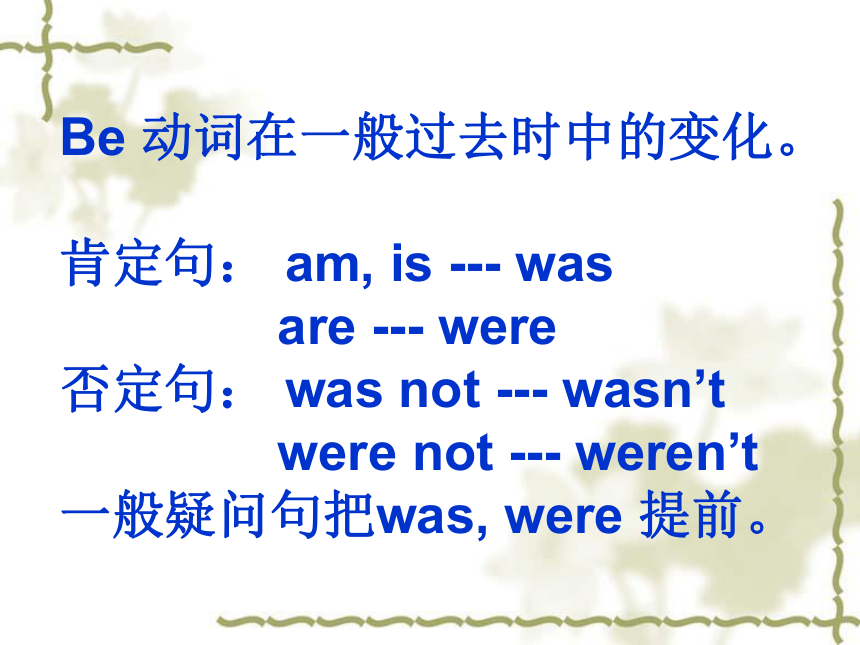
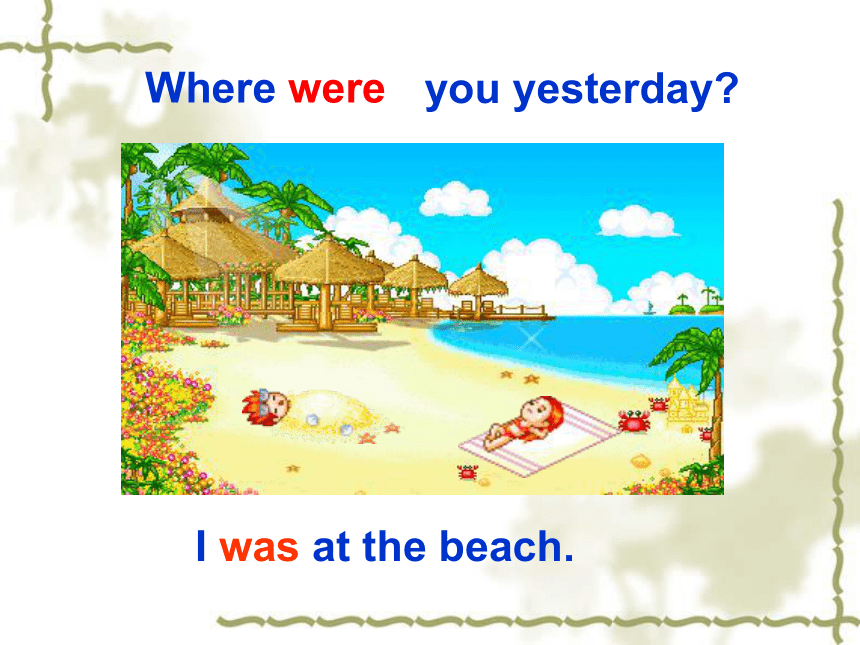
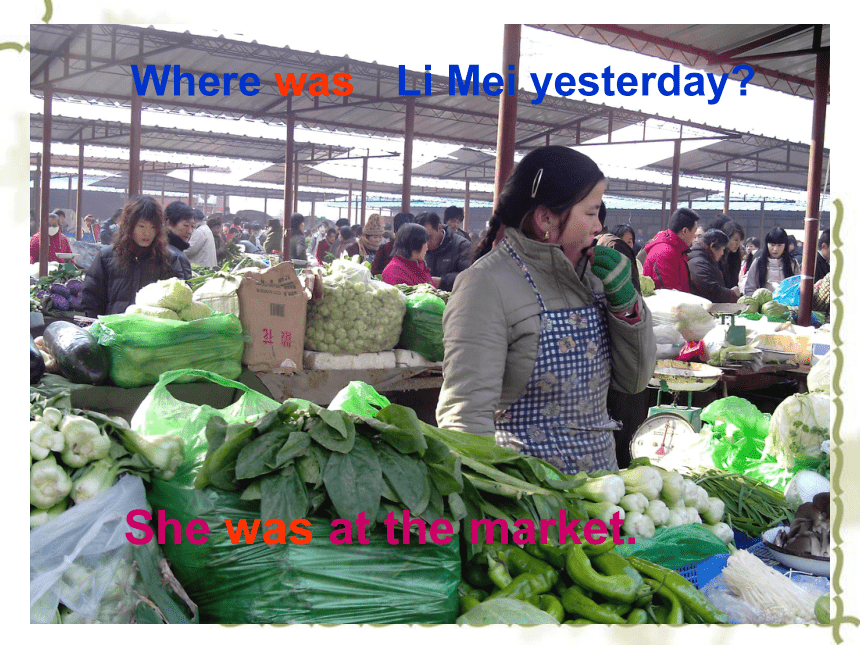
文档简介
课件17张PPT。一般过去时 一般过去是表示过去某个时间发生的动作或存在
的状态, 常和表示过去的时间状语连用。也表示
过去经常或反复发生的动作。
时间状语:
yesterday / yesterday morning / yesterday afternoon / yesterday evening / the day before yesterday / last week / last year / last night / an hour ago / in 1960规则动词过去式的构成 一般情况下,加-ed。
ask --- asked, help --- helped
2. 结尾是“e”的词,加-d。
dance --- danced, live --- lived
3. 重读闭音节词,且末尾只有一个辅音字母的,
先双写这个辅音字母,再加-ed。
stop --- stopped, plan --- planned
4. 以辅音字母加y 结尾的词,改 y 为i, 再加-ed.
carry --- carried, study --- studied不规则动词的过去式Be 动词在一般过去时中的变化。
肯定句: am, is --- was
are --- were
否定句: was not --- wasn’t
were not --- weren’t
一般疑问句把was, were 提前。Where wereyou yesterday?I was at the beach.Where wasLi Mei yesterday?She was at the market.Where wasshe last night?She was at home.they last Sunday?They were at the library.Where wereI wasn’t in the park.I was at the department store.Where were you an hour ago?BeiHai park Tina an hour ago?Where wasShe was at home.She wasn’t
in BeiHai park. Tom and Anna last Sunday?Where wereThey were at the library.They weren’t at the super market.There be 句型There was a(n) + 可数名词单数形式
不可数名词
e.g. There was a time capsule.
There were + some/ many +可数名词复数形式
e.g. There were many sections in the exhibition.{In the pastThere wasn’t a(n) + 可数名词单数形式
any + 不可数名词
e.g. There wasn’t a table.
There wasn’t any pollution.
There weren’t + any +可数名词复数形式
e.g. There weren’t any traffic problems.{When I young, the village very different.
There not many cars but there many horses.
There not any tall buildings,
but there lots of houses. There not many
people.The village quiet, and the air clean.
Now there lots of tourists and lots of buses. It’s noisy.waswasweren’twereweren’twereweren’twaswaswere
的状态, 常和表示过去的时间状语连用。也表示
过去经常或反复发生的动作。
时间状语:
yesterday / yesterday morning / yesterday afternoon / yesterday evening / the day before yesterday / last week / last year / last night / an hour ago / in 1960规则动词过去式的构成 一般情况下,加-ed。
ask --- asked, help --- helped
2. 结尾是“e”的词,加-d。
dance --- danced, live --- lived
3. 重读闭音节词,且末尾只有一个辅音字母的,
先双写这个辅音字母,再加-ed。
stop --- stopped, plan --- planned
4. 以辅音字母加y 结尾的词,改 y 为i, 再加-ed.
carry --- carried, study --- studied不规则动词的过去式Be 动词在一般过去时中的变化。
肯定句: am, is --- was
are --- were
否定句: was not --- wasn’t
were not --- weren’t
一般疑问句把was, were 提前。Where wereyou yesterday?I was at the beach.Where wasLi Mei yesterday?She was at the market.Where wasshe last night?She was at home.they last Sunday?They were at the library.Where wereI wasn’t in the park.I was at the department store.Where were you an hour ago?BeiHai park Tina an hour ago?Where wasShe was at home.She wasn’t
in BeiHai park. Tom and Anna last Sunday?Where wereThey were at the library.They weren’t at the super market.There be 句型There was a(n) + 可数名词单数形式
不可数名词
e.g. There was a time capsule.
There were + some/ many +可数名词复数形式
e.g. There were many sections in the exhibition.{In the pastThere wasn’t a(n) + 可数名词单数形式
any + 不可数名词
e.g. There wasn’t a table.
There wasn’t any pollution.
There weren’t + any +可数名词复数形式
e.g. There weren’t any traffic problems.{When I young, the village very different.
There not many cars but there many horses.
There not any tall buildings,
but there lots of houses. There not many
people.The village quiet, and the air clean.
Now there lots of tourists and lots of buses. It’s noisy.waswasweren’twereweren’twereweren’twaswaswere
同课章节目录
- Unit 1 Daily Life
- Lesson 1 After School
- Lesson 2 A Dangerous Job
- Lesson 3 Safety First
- Communication Workshop
- Unit 2 On the Weekend
- Lesson 4 Helping at Home
- Lesson 5 Talking to Friends
- Lesson 6 Going Out
- Communication Workshop
- Unit 3 Food and Drink
- Lesson 7 Shopping for Food
- Lesson 8 At a Restaurant
- Lesson 9 Food for Sport
- Communication Workshop
- Unit 4 Seasons and Weathe
- Lesson 10 Weather in Beijing
- Lesson 11 Weather Around the World
- Lesson 12 Summer Holiday
- Communication Workshop
- Unit 5 Now and Then
- Lesson 13 Changes in Our Town
- Lesson 14 My First Day
- Lesson 15 My Favourite Teacher
- Communication Workshop
- Unit 6 The Animal Kingdom
- Lesson 16 My Favourite Animal
- Lesson 17 Interesting Animals
- Lesson 18 An Animal Story
- Communication Workshop
